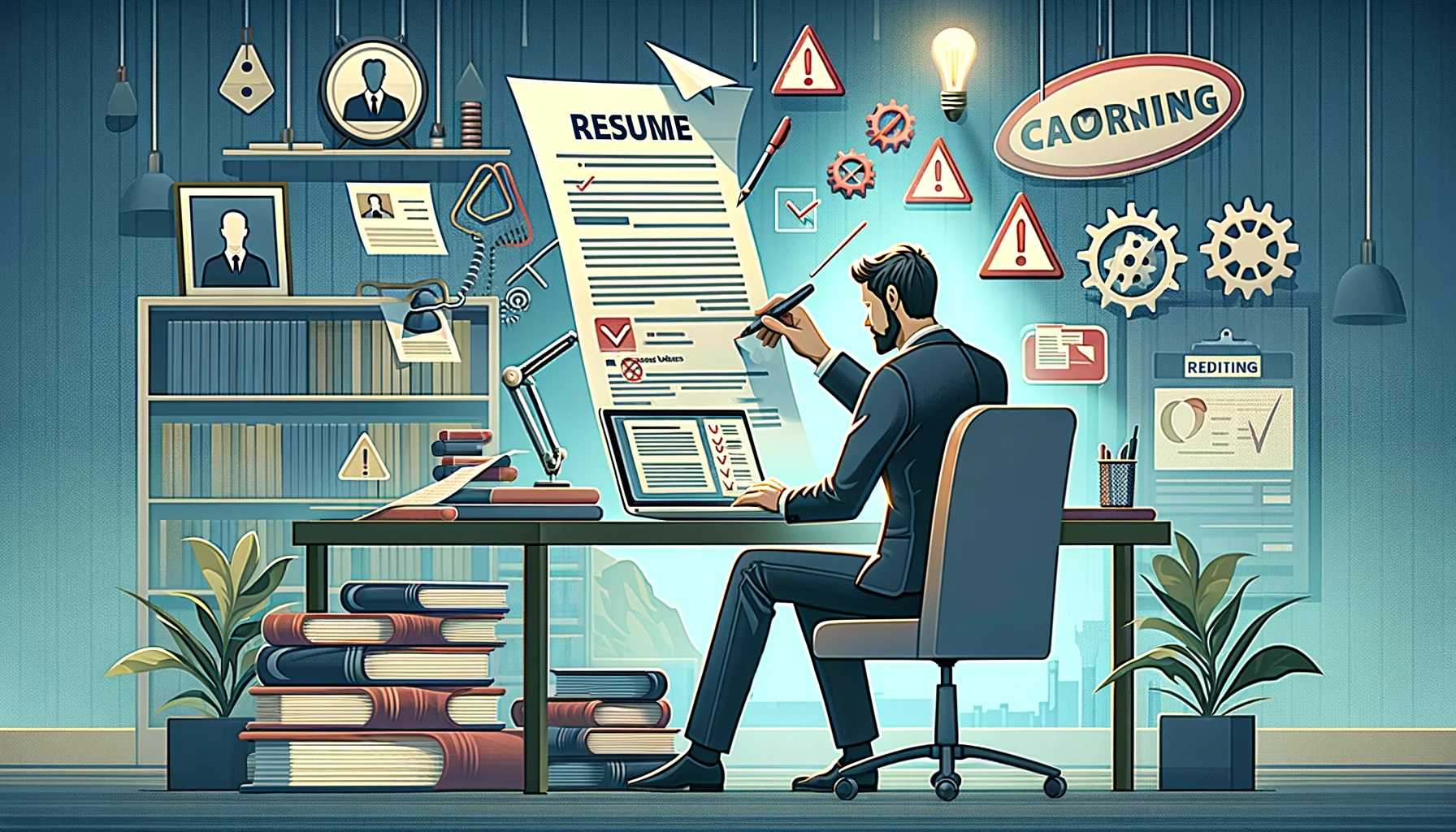Steering Clear of Common Resume Writing Missteps
Introduction:
Hello career adventurers and job seekers! Today, let's embark on a journey through the professional landscape, specifically focusing on the intricacies of resume writing. Crafting a resume is like navigating a challenging terrain, and just like any journey, there are pitfalls to avoid. In this blog post, we'll explore the common resume writing mistakes that often trip up even the most seasoned professionals. So, lace up your professional boots, grab your metaphorical compass, and let's navigate the resume writing trail with confidence and finesse.
1. The Riddle of the Chronological Maze: Avoiding Unfocused Timelines
The chronological order of your work experience is the roadmap of your professional journey. One common mistake is presenting a timeline that resembles a riddle rather than a clear narrative. Ensure your work history follows a logical order, with each role building upon the last. This avoids confusion and allows recruiters to trace the evolution of your skills and responsibilities.
2. The Mystery of Length: Striking the Right Balance
The length of your resume is like the Goldilocks dilemma – not too short, not too long, but just right. Some job seekers cram too much information into a single page, while others let their resume sprawl into multiple pages. Aim for a concise document that highlights your key achievements without overwhelming the reader. Quality over quantity should be your guiding principle.
3. The Keyword Conundrum: Balancing Optimization and Authenticity
While incorporating keywords is essential for passing through applicant tracking systems (ATS), it's crucial to strike a balance. Some resumes read like a robotic checklist of buzzwords, sacrificing the authenticity of your voice. Integrate relevant keywords naturally within the context of your achievements and skills. This ensures your resume is both ATS-friendly and genuinely reflective of your expertise.
4. The Font Fiasco: Choosing Clarity Over Fancy
Your resume's font choice is not a design whim; it's a strategic decision. Some candidates opt for elaborate, decorative fonts, thinking it will make their resume stand out. However, readability is paramount. Choose a clean, professional font that is easy on the eyes. Consistency in font style and size throughout your resume creates a polished and visually appealing document.
5. The Skills Overload: Prioritizing Relevance
The skills section of your resume is like a highlight reel of your professional toolkit. However, it's not a dumping ground for every skill you possess. Tailor this section to highlight the skills most relevant to the job you're applying for. This targeted approach showcases your proficiency in areas directly aligned with the employer's needs.
6. The Jargon Jumble: Simplifying Technical Language
While showcasing technical expertise is crucial, avoid drowning your resume in industry jargon. Remember, your resume is often the first point of contact with recruiters who may not be experts in your field. Clearly articulate your technical skills in a way that's accessible to a broader audience, emphasizing the value you bring to the table.
7. The Tense Tango: Maintaining Consistency
Verb tense is the dance partner of your resume – and it should be a consistent one. Past tense is appropriate for describing past roles and accomplishments, while present tense is suitable for current roles. Inconsistencies in verb tense can create confusion and disrupt the flow of your professional narrative.
8. The Education Extravaganza: Prioritizing Relevance
Your education section is an essential component, but it doesn't need to be an exhaustive autobiography of your academic journey. Focus on relevant degrees, certifications, and coursework that directly support your professional goals. If you're a seasoned professional, your academic achievements become a stepping stone rather than the centerpiece of your resume.
9. The Generic Goal: Crafting a Tailored Objective
The days of generic objectives like "Seeking a challenging position in a dynamic company" are behind us. Craft a tailored objective or professional summary that speaks directly to the specific role you're targeting. This sets the tone for your resume and immediately communicates your career aspirations and how they align with the job at hand.
10. The Reference Reflex: Reserving Space Wisely
Including "References available upon request" is a relic of the past. Employers assume you'll provide references if requested, so save the precious real estate on your resume for more impactful content. Use that space to delve into your achievements, skills, and experiences instead.
11. The Visual Overkill: Prioritizing Substance
While a visually appealing resume is important, avoid the temptation to overload it with graphics, colors, or elaborate designs. Overly stylized resumes can distract from the content and may not be compatible with applicant tracking systems. Strike a balance by incorporating clean, professional formatting that enhances readability without overshadowing your qualifications.
12. The Proofreading Pitfall: Eliminating Errors
Nothing disrupts the professional tone of your resume like typographical errors. Even the most accomplished professionals can be hindered by simple mistakes. Before sending out your resume, meticulously proofread it. Better yet, enlist a second pair of eyes to catch any overlooked errors. A polished resume reflects attention to detail and a commitment to professionalism.
Conclusion: Navigating the Resume Landscape with Confidence
As you traverse the landscape of resume writing, armed with the knowledge of common pitfalls, may your professional journey be smooth and successful. Remember, your resume is not just a document; it's your professional narrative, a story of your achievements, skills, and aspirations. So, embrace the crafting process, navigate with confidence, and may your resume open doors to exciting opportunities.









